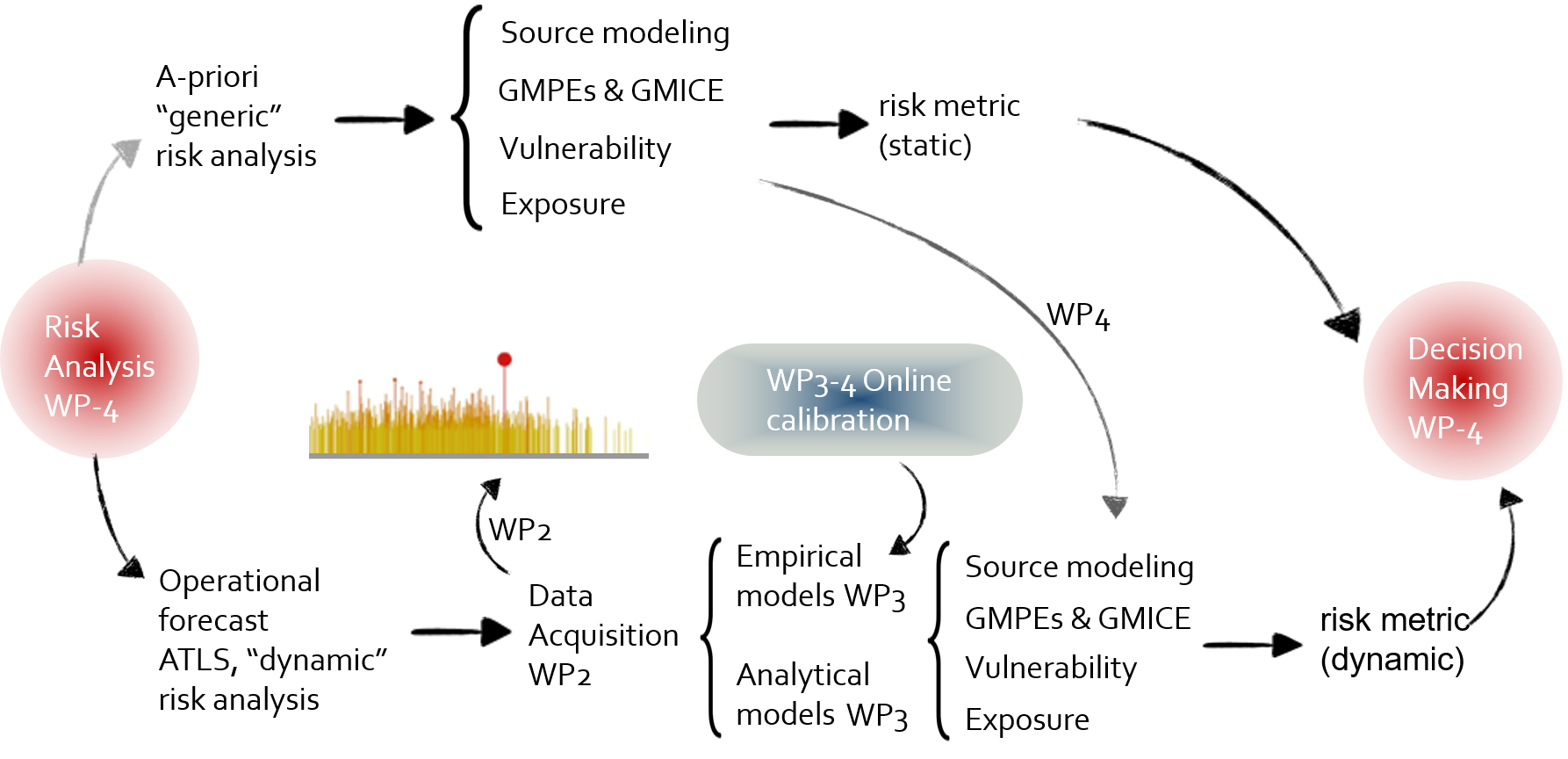WP4 - Risk Assessment and Mitigation
Safety assessment will use the forecasted seismicity rates (WP3) as input to assess in real-time the seismic hazard and risk posed by the operations. Doing this requires the definition of adequate ground motion prediction models, knowledge on the relevant local site amplification and knowledge on the exposure and fragility of building or structures (e.g., Mignan et al., 2017, Trutnevyete and Wiemer, 2017). It also requires knowledge on the future operation procedures. These risk assessments can then be compared to the relevant risk metric, defined by the operator and regulator, thus ensuring the safe operation and adherence to predefined safety criteria at all times (Trutnevyete and Wiemer, 2017). Operators can then exploit how alternative operation parameters will influence the adherence to safety thresholds while at the same time modeling the expected reservoir performance. Finally, the effectiveness of mitigation strategies can be quantitatively assessed (Mena et al., 2013; Kiraly et al., 2016).
Within this project, we present the basis for a coherent hazard and risk management framework for fluid-induced seismicity in the Hengill region in Iceland. Specifically, we first discuss in detail the progress on both analytical and computational tools for an a-priori hazard and risk assessment and, second, we introduced a Bayesian updating scheme to integrate real-time monitoring with online hazard and risk updating. The proposed hazard computation is based on classical Probabilistic Seismic Hazard Analysis (PSHA) adapted for fluid-induced seismicity. Next, the risk computation is based on the convolution of hazard curves together with the vulnerability models tuned to the Icelandic built environment. The outputs of the framework are Individual Risk and Damage Risk, which are two metrics used for decision making in the Real-Time Induced Seismicity Controller (RISC) system. In the updating scheme, both the hazard output and the risk metrics are updated online based on real-time seismic monitoring. We tested the proposed framework for a synthetic case test, showing a potentially significant reduction of epistemic uncertainties that are currently present in the source modeling parameters.
